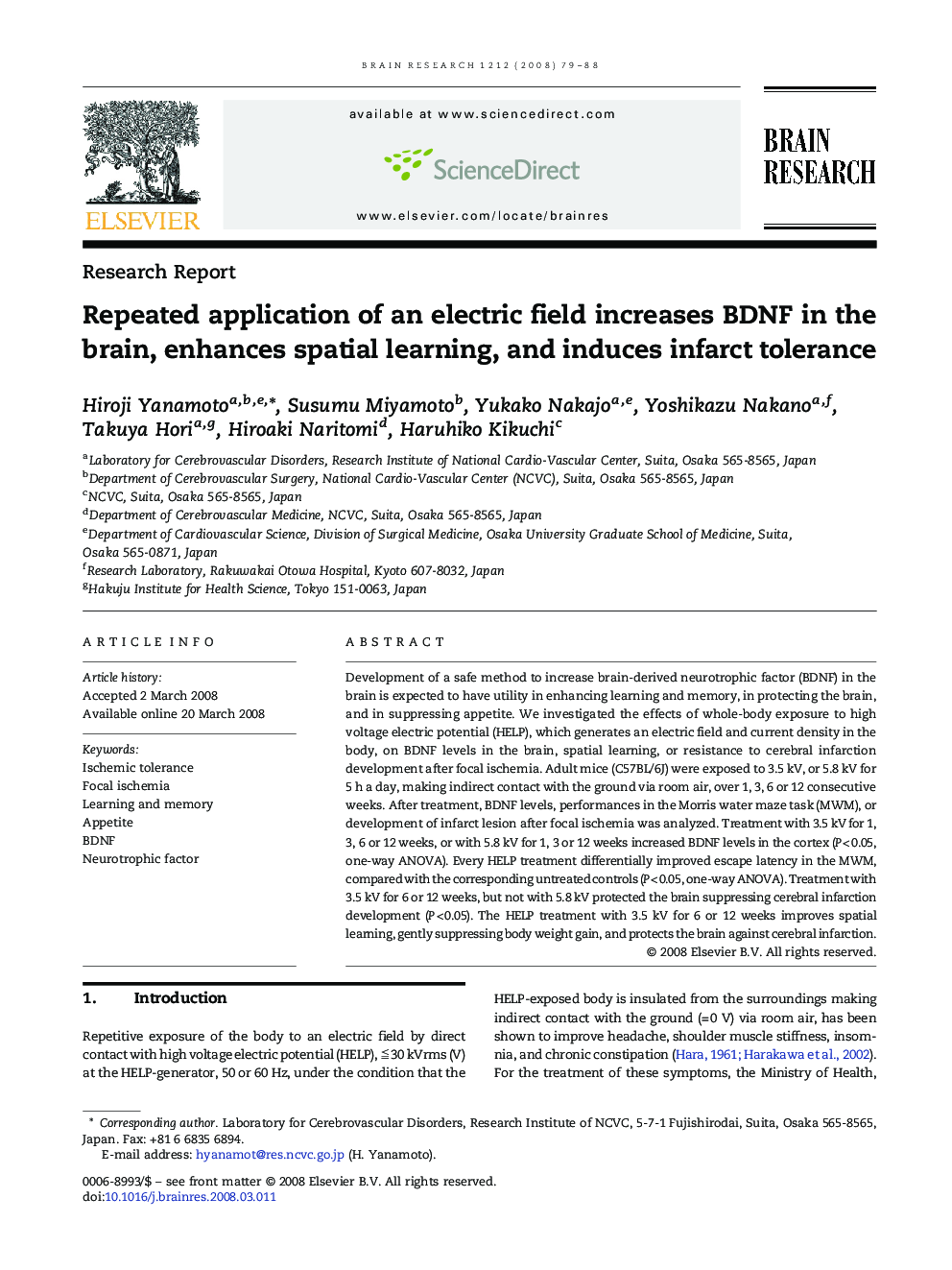| Article ID | Journal | Published Year | Pages | File Type |
|---|---|---|---|---|
| 4329641 | Brain Research | 2008 | 10 Pages |
Development of a safe method to increase brain-derived neurotrophic factor (BDNF) in the brain is expected to have utility in enhancing learning and memory, in protecting the brain, and in suppressing appetite. We investigated the effects of whole-body exposure to high voltage electric potential (HELP), which generates an electric field and current density in the body, on BDNF levels in the brain, spatial learning, or resistance to cerebral infarction development after focal ischemia. Adult mice (C57BL/6J) were exposed to 3.5 kV, or 5.8 kV for 5 h a day, making indirect contact with the ground via room air, over 1, 3, 6 or 12 consecutive weeks. After treatment, BDNF levels, performances in the Morris water maze task (MWM), or development of infarct lesion after focal ischemia was analyzed. Treatment with 3.5 kV for 1, 3, 6 or 12 weeks, or with 5.8 kV for 1, 3 or 12 weeks increased BDNF levels in the cortex (P < 0.05, one-way ANOVA). Every HELP treatment differentially improved escape latency in the MWM, compared with the corresponding untreated controls (P < 0.05, one-way ANOVA). Treatment with 3.5 kV for 6 or 12 weeks, but not with 5.8 kV protected the brain suppressing cerebral infarction development (P < 0.05). The HELP treatment with 3.5 kV for 6 or 12 weeks improves spatial learning, gently suppressing body weight gain, and protects the brain against cerebral infarction.
